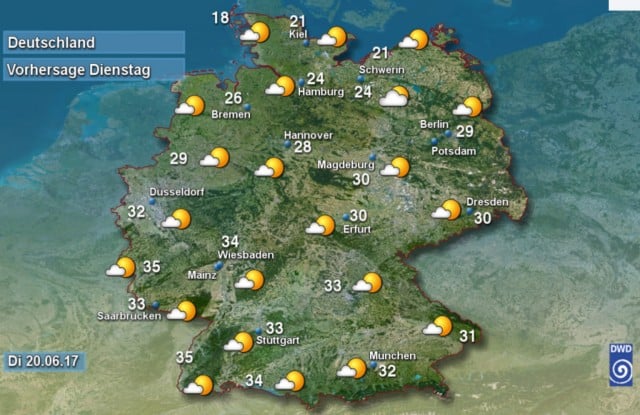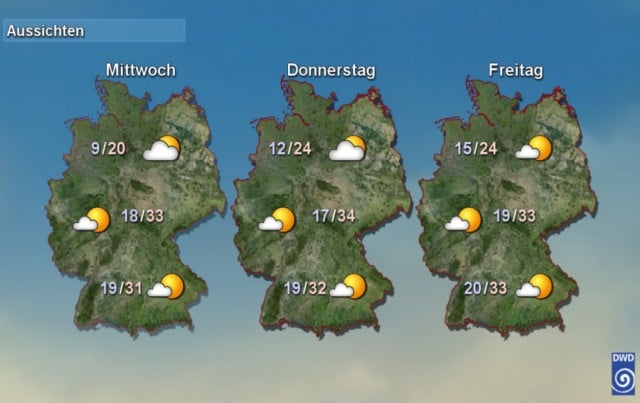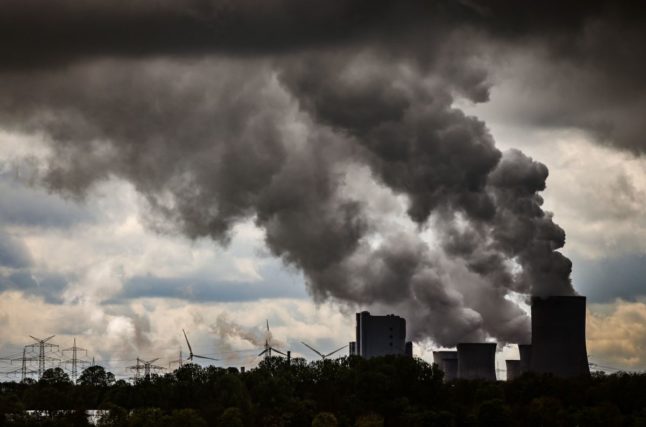The German Weather Service (DWD) has indicated that due to high pressure, temperatures will increase this week.
Tuesday is expected to remain mostly rain free, although clouds will move from north to central Germany, possibly bringing short showers with them as well as a chance of localised thunderstorms. The sun will shine in a clear sky in the south before clouds form in the afternoon, bringing localised thunderstorms.
Maximum temperatures in the north will lie between 20C and 28C, or 18C by the sea. Elsewhere, temperatures will hit 27C to 35C, with the hottest regions being the upper Rhine and Palatinate.
 DWD predictions for Tuesday. Source: DWD
DWD predictions for Tuesday. Source: DWD
Germany will experience similar weather again on Wednesday.
The north and northeast will lie under thicker cloud, but for the most part it will remain dry. Elsewhere it will be sunny, but in the course of the day clouds will develop in the south and individual, localised showers and thunderstorms are predicted.
Temperatures in the north are expected to cool to highs of 17C to 24C, but elsewhere they will be similar to the previous day at around 25C-34C, with the warmest temperatures in the high and upper Rhine regions.
Thursday will remains cloudy in north and east Germany, with showers and thunderstorms arriving. The south and west will see a pleasant start to the day, but clouds will appear later on, bringing thunderstorms with them.
In the north and east temperatures will lie between 19C and 24C under the clouds. However, the south and west will be much more summery, with highs between 27C and 35C, even hitting a sweltering 37C in areas of the southwest.
 DWD predictions for Wednesday, Thursday and Friday. Source: DWD
DWD predictions for Wednesday, Thursday and Friday. Source: DWD
Friday and Saturday will see changeable skies, so there will be storms and showers in places. On Friday the highs will be 24C in the north and 33C in the southwest. These temperatures will cool on Saturday with highs of 20C-29C.
Following the weekend trend, Sunday will also be changeable. Rain is expected in north and central Germany. Individual showers and thunderstorms are expected in the south. Temperatures are to lie between 18C on the coast in the north, and 29C in the upper Rhine region.
Between June 26th and 28th the weather is predicted to alternate between sun and cloud. The highest temperatures will lie between 18C and 28C.




 Please whitelist us to continue reading.
Please whitelist us to continue reading.